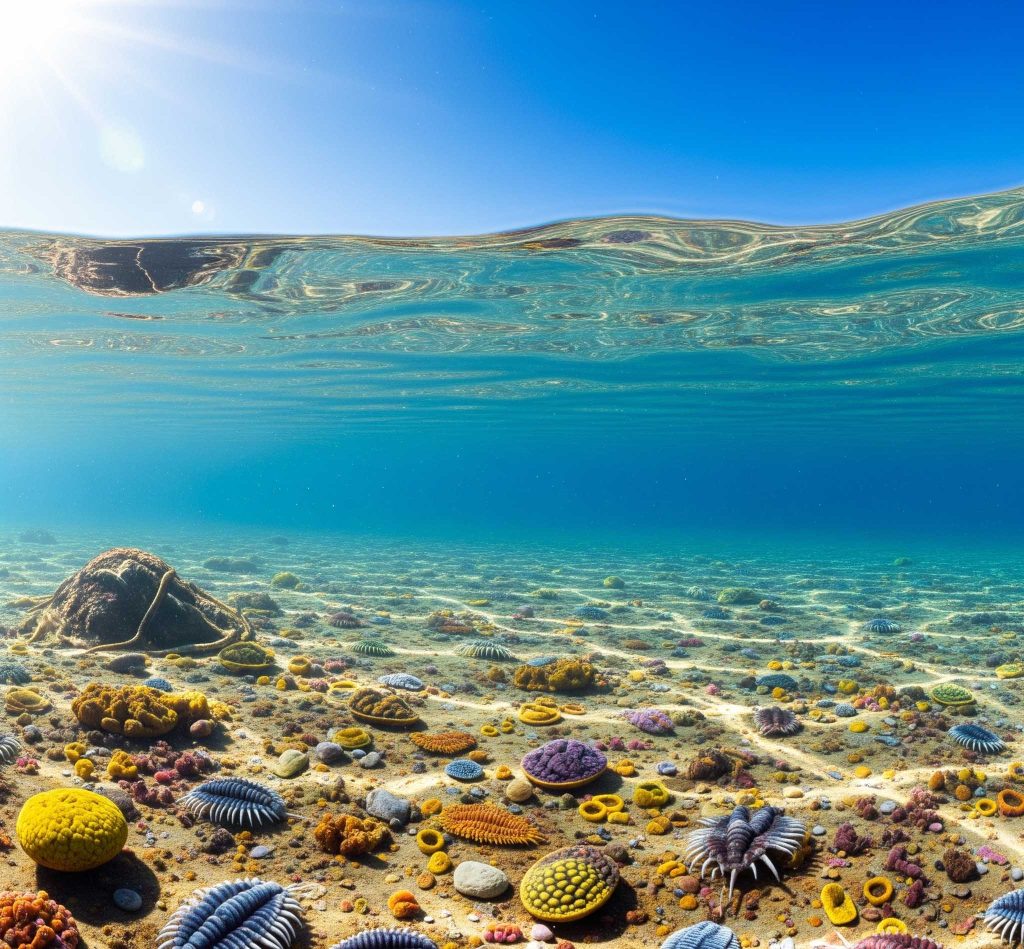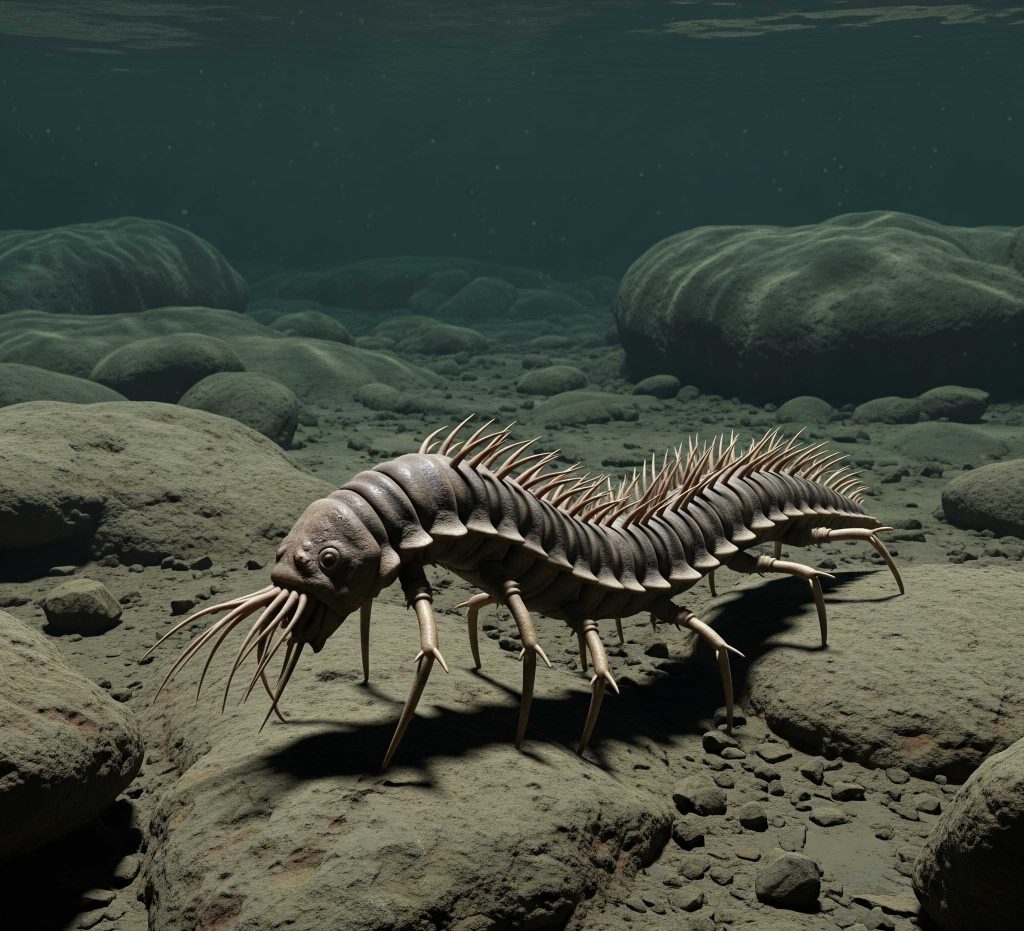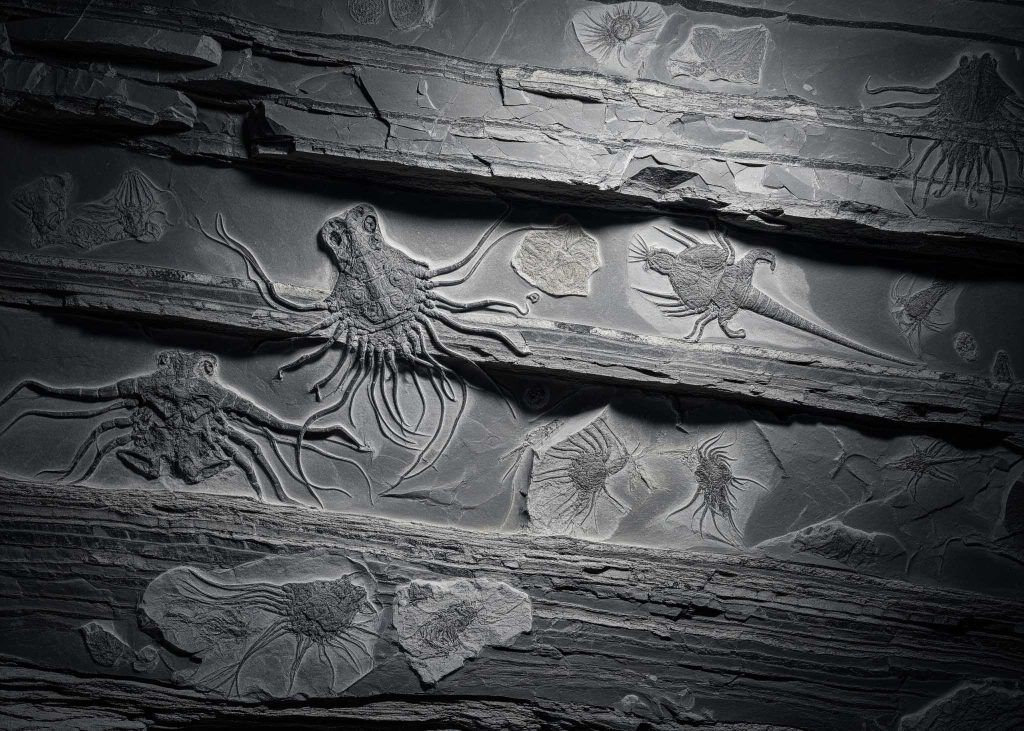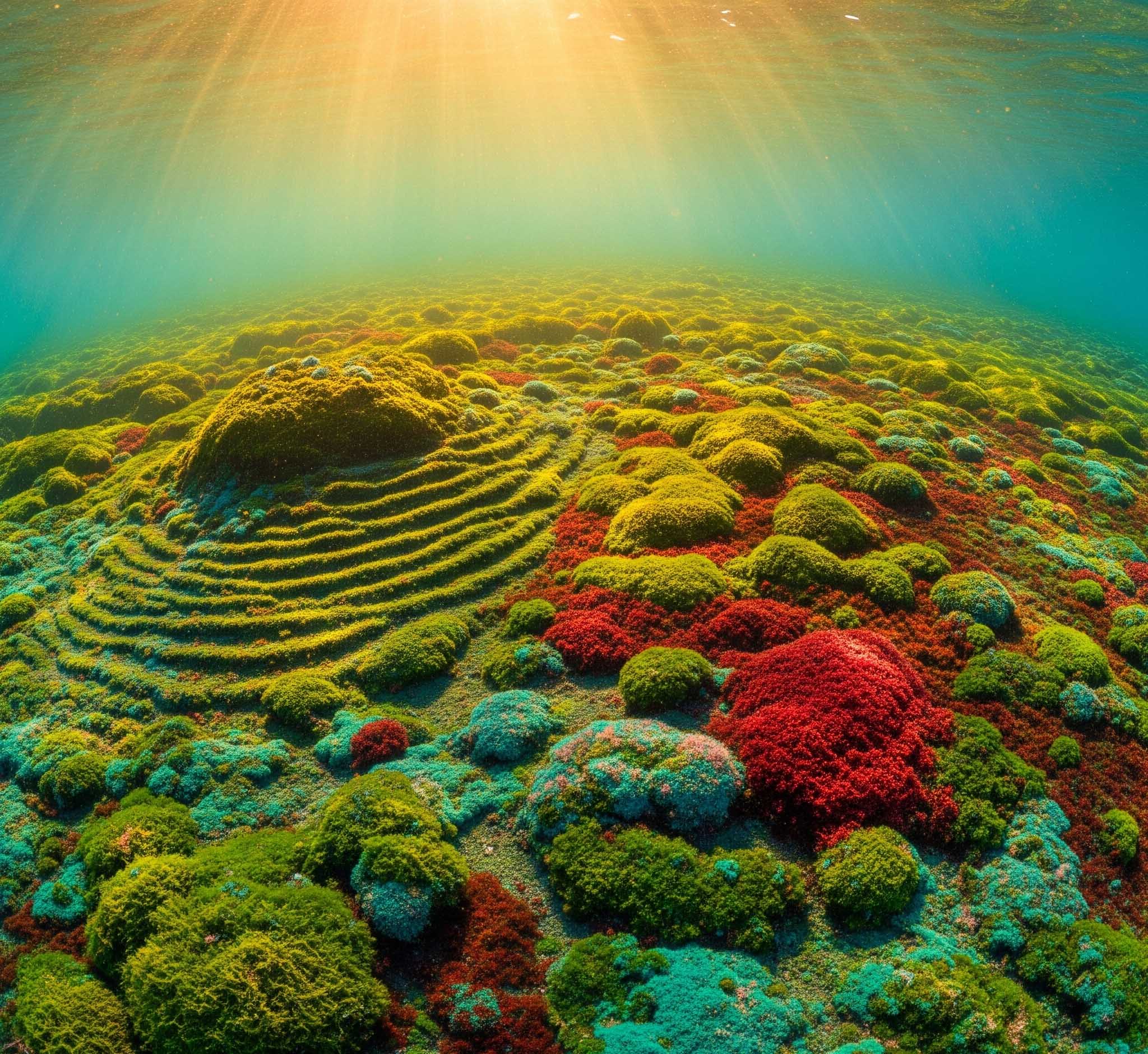Imagine a world where for billions of years, life was super simple. We’re talking about tiny, tiny living things, mostly just single cells floating in the ocean. They didn’t have eyes, or legs, or even mouths! It was a quiet, slow world.
But then, around 541 million years ago, something absolutely amazing happened. It was like someone flipped a switch, or pressed a giant “start” button for life! In a surprisingly short amount of time (for Earth’s history, that is), the oceans suddenly exploded with all sorts of new, strange, and wonderful creatures.
This incredible event is called the Cambrian Explosion. It’s when almost all the main types of animals we see today first appeared. Think of it like life’s very own “big bang” of creativity. And boy, did it get weird!
Don’t Miss This!
After reading, challenge yourself with our interactive quiz at the end. Click here to take the Quiz
Index

A World of Evolutionary Experiments
The creatures of the Cambrian Period were unlike anything that came before them. And honestly, many of them were unlike anything that has come since! It was a time when nature was trying out all sorts of wild and crazy ideas for what an animal could look like and how it could live.
How do we know about these super old, super weird animals? Thanks to a special place in Canada called the Burgess Shale. It’s a fossil bed that has perfectly preserved these soft-bodied creatures, giving us an amazing peek into this bizarre ancient world.
Let’s meet some of the strangest stars of the Cambrian:
- Hallucigenia: This creature is so weird, scientists argued for years about which end was its head! It was a worm-like animal that walked on seven pairs of pointy, stilt-like spines. It also had a row of tentacles along its back. It truly looked like something from a dream (or a nightmare!).
- Opabinia: Imagine a creature with five eyes on stalks, like little periscopes, and a long, bendy nose (called a proboscis) that ended in a claw! That was Opabinia. It probably used its strange nose to grab food and put it into its mouth, which was on the underside of its head.
- Anomalocaris: This was the biggest and scariest predator of the Cambrian seas, like the great white shark of its day! It could grow up to a meter (about 3 feet) long. It had two big, spiny arms for grabbing prey and a round, pineapple-ring-shaped mouth that could crush its victims.
- Wiwaxia: This slug-like creature was covered in tough, protective spines and scales. It was like an early armored tank, protecting itself from the new predators like Anomalocaris that were showing up.
“It was life’s very own ‘big bang’ of creativity, and it got very, very weird!”
What Caused This Amazing Explosion of Life?
Scientists are still like detectives, trying to figure out exactly why the Cambrian Explosion happened so suddenly. It was probably a mix of different things happening at just the right time.
Here are some of the main ideas:
- A Rise in Oxygen: Before the Cambrian, there wasn’t much oxygen in the oceans. But then, more oxygen started to build up. This extra oxygen was like a super-fuel for life, allowing animals to grow bigger, move faster, and become more complicated. Think of it like having more energy to build bigger, fancier houses!
- The Evolution of Vision: This is a super cool idea! Before the Cambrian, most animals couldn’t really see. But then, the first true eyes started to appear. Imagine if suddenly everyone could see! This would have started a giant “arms race” between animals. Predators needed better eyes to hunt, and prey needed better eyes (and armor, and speed!) to escape. This race made animals evolve super fast.
- A Favorable Environment: The Earth had just come out of a super cold period called “Snowball Earth” (we’ll talk about that later!). The world was getting warmer, and the oceans were full of important minerals. These minerals were like building blocks, giving life the materials it needed to build new skeletons, shells, and other hard parts.
- A Genetic Toolkit: Scientists think that the basic “instructions” for building complex bodies (like having a head, a tail, and different body parts) were already inside the tiny, simple creatures. The Cambrian Explosion might have been when these instructions finally got turned on, allowing life to build all sorts of new designs.

The Story Keeps Getting Weirder!
Scientists are always finding new fossils and using new technology to learn more about the Cambrian Explosion. For example, recent studies are looking at the tiny marks left by these animals in the mud. These marks, called trace fossils, can tell us how they moved, how they ate, and even how they might have fought each other.
One exciting new discovery is about how some of these early animals might have used light. Some scientists think that certain Cambrian creatures might have had simple ways to sense light, even before true eyes fully developed. This could have been another trigger for the “arms race” of vision.
Another area of research is looking at the chemistry of the ancient oceans. By studying the rocks, scientists can figure out exactly how much oxygen and minerals were available. This helps them understand why the Cambrian Explosion happened when it did, and not earlier or later.
“The Cambrian Explosion was a fleeting moment of incredible creativity, a time when the blueprints for the entire animal kingdom were drawn up in a frenzy of evolutionary innovation.”
Our Own Story
Even though many of the super-weird Cambrian creatures didn’t make it (they were like evolutionary experiments that didn’t quite work out), this period was super important. It laid the foundation for all the animal life that came after it. The very first vertebrates—the ancestors of all fish, amphibians, reptiles, birds, and mammals (that’s us!)—first appeared during this time.
So, the next time you look at a fish, or a bird, or even your own hand, remember the Cambrian Explosion. It was a short but amazing time when life on Earth got super creative, and it’s all thanks to those weird and wonderful creatures that our own story could begin!

The Cambrian Explosion Quiz
How well do you know life’s “big bang”?


Leave a Reply